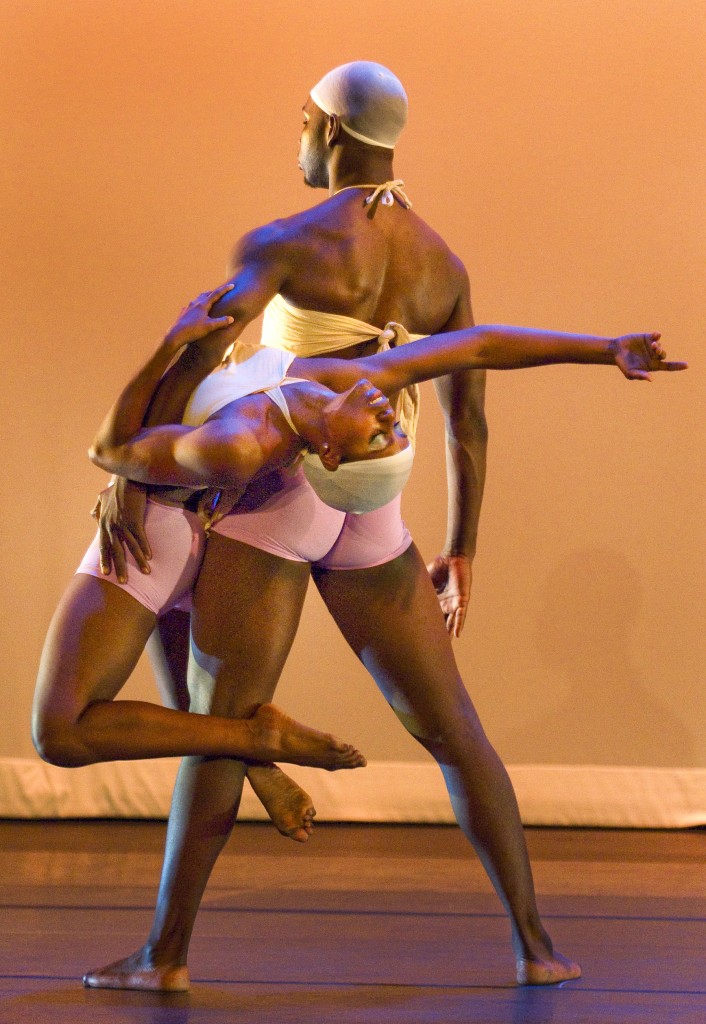
Artist Interview: Augusto Soledade
Augusto Soledade is Brazz Dance Theater’s acclaimed choreographer and artistic director. He will premiere exciting new work, entitled “Cordel” and set to music by Daniel Bernard Roumain, at the South Miami-Dade Cultural Arts Center on Nov. 11, 12, 18 and 19 at 8:30 p.m. and Sundays on Nov. 13 and 20 at 3 p.m. Known for fusing Afro-Brazilian movement with modern dance, Soledadecreated this newest piece following this impule. During a month-long residency at South Miami-Dade Cultural Arts Center,”Cordel” harnesses the energy of Argentine tango, American hip-hop and the Cordel literature of Brazil.Neil de la Flor: Tell me about “Cordel,” a new work that will premiere next month at the South Miami-Dade Cultural Arts Center Lab Theater. Augusto Soledade: This new work, “Cordel,” will consider the history and social implications of the Argentine tango and American hip-hop culture, as well as the literary tradition of Cordel in Northeastern Brazil as inspirations for the creation of an abstract contemporary dance that brings, in its core, a discussion on marginalization and social tensions around the globe. “Cordel” will not reproduce or represent traditional Argentine tango, hip-hop dance or Cordel literature. It will be a work of original dance poetics complemented with music by Daniel Bernard Roumain. The strong, poetic sense in tango dance and the poetic structures found in hip-hop and Cordel literature will serve as main frames for inspiration, exploration, development and structuring of the choreography. The particular social contexts in which tango and hip-hop dance originated serve as a linking piece for these distinct forms and offer a rich source of physical and cultural information to be explored artistically. In the article “Medics, Crooks, and Tango Queens: The National Appropriation of a Gay Tango,” author Jorge Salessi says: “The tango syncretized Latin America, African and European musical and cultural elements that mingled in an underworld of Buenos Aires at the turn of the century.” Regarding hip-hop, author Adam Bradley, in “Book of Rhymes: The Poetics of Hip Hop,” states hip-hop emerged out of urban poverty to become one of the most vital cultural forces of the past century. Both tango and hip-hop have distinct cultural elements. However, they share an origin in hardship. Cordel literature offers social commentary through its “narrative, popular, printed poetry,” as defined by Professor Raymond Cantel. Cordel literature (“string literature”) are popular and inexpensively printed booklets, pamphlets containing folk novels, poems and songs, which are produced and sold by side-street vendors in the northeast of Brazil. ND: How is it different or similar to previous works? AS: I feel “Cordel” is different from other works in the sense that for each choreographic project, I try to immerse myself in its world so I can understand how it is that the work should unfold. I feel the process in creating new works is always singular. We may rely on tools and strategies to develop the choreography, but the artist-work relationship is only found in the moment that we are in the studio making decisions about the specific work we are creating. However, similarly to other works, through “Cordel,” I attempt to address issues of our contemporary lives and find ways to connect with the various cultures around the world. Social tensions and marginalization are, in fact, global phenomena that deserve attention, activism and a dose of artistic release. ND: Is dance a universal language? AS: I feel it can definitely be a universal language, especially if we are open to communicating nonverbally. ND: What does it mean? AS: It means we can connect with dance in different ways, such as spiritually, socially and, of course, aesthetically. The power of a dancing body as it designs the space, in whatever context, offers an opportunity for sharing our humanities that is simply irresistible. ND: Are humans born to dance or do we learn how to become dancers? AS: I believe we are all born to dance, but we train to become better dancers. And here I am not limiting myself to any specific dance style, genre or even contexts. The training I am referring to is the simple consistency in that act of dancing/moving, in whatever context, will make us more and more aware of our physical body and its possibilities. ND: What’s the one (or several) ideas you’d like Knight Art readers to know about you and Brazz Dance? AS: I found a “real” home in Miami, and I am eager and happy to continue to live here and make artistic contributions to our community. I am also actively engaged in helping promote Miami as a viable community for performing artists. Brazz Dance Theater’s dancers are professional artists with a wide and well-rounded training background; their training ranges from classical and contemporary ballet to modern and contemporary dance, as well as African diasporic dances. Our dancers come from various backgrounds, including Caribbean, Brazilian and North America. I feel the diverse ethnic makeup of the company is an essential element in the definition and expansion of my claimed Afro-Fusion style and will further enhance the notion that my works move from culturally rooted to globally scoped. South Miami-Dade Cultural Arts Center on Nov. 11, 12, 18 and 19 at 8:30 p.m. and Sundays on Nov. 13 and 20 at 3 p.m. Tickets are $15 ($5 Cultureshockmiami.com available for ages 13 through 22). For tickets, call 305-573-5300. For information, visit www.smdcac.org.(10950 S.W. 211 St., Cutler Bay)
Recent Content
-
Artsarticle ·
-
Artsarticle ·
-
Artsarticle ·

